
Colosseum & Roman Forum: Tickets and Tours
Gladiators once clashed while bears and tigers roared in front of a seething crowd of tens of thousands of Romans in this colossal amphitheater. What remains is a long-standing testament to the engineering prowess of the ancient Roman Empire. The Colosseum was not only the largest amphitheater in the world in its day, its scale still rivals today’s biggest stadiums, hosting up to 80,000 spectators at a time. Book your Colosseum and Roman Forum tickets to set foot inside this massive structure that’s still standing after nearly two millennia.
Read Full Guide
Checking Musement... (0/24 providers)
















































Gladiators once clashed while bears and tigers roared in front of a seething crowd of tens of thousands of Romans in this colossal amphitheater. What remains is a long-standing testament to the engineering prowess of the ancient Roman Empire.
The Colosseum was not only the largest amphitheater in the world in its day, its scale still rivals today’s biggest stadiums, hosting up to 80,000 spectators at a time.
Book your Colosseum and Roman Forum tickets to set foot inside this massive structure that’s still standing after nearly two millennia.
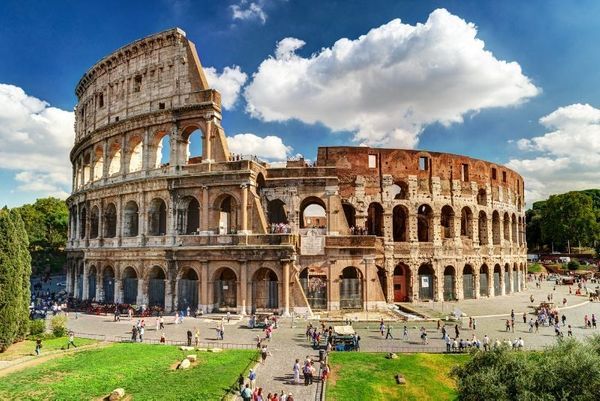
Here's everything you need to know about the Colosseum and Roman Forum, among the most impressive attractions in Rome.
How much do Colosseum tickets cost?

It depends. Colosseum tickets have different prices depending on how many areas you want to visit.
You can also book tickets with or without a guided tour. Free and reduced prices are available for eligible visitors.
Standard Colosseum tickets
Standard tickets to the Colosseum can only be purchased online in advance for a specific day and time.
They include 1-day access to the Colosseum, Roman Forum and Palatine Hill. The Colosseum arena and underground areas are not included.
- Standard Colosseum ticket price: €18
- Reduced Colosseum ticket price for EU citizens under 25 (included until the day after their 25th birthday): €4
- All EU citizens under 18 and people with disabilities plus one companion have free admission.
Full-experience Colosseum tickets
Full-experience tickets to the Colosseum can only be purchased online in advance for a specific day and time.
They include 2-day access to the Colosseum, Roman Forum, Palatine Hill, the Colosseum arena and underground areas and four additional sites of the Roman Forum not included in the standard Colosseum ticket.
In the Roman Forum, you will also have access to the Oratorio dei Quaranta Martyrs, Palatine Museum, Schola Praeconum and the exterior of the House of Augustus.
- Full Experience Colosseum ticket price: €24
- Reduced Colosseum ticket price for EU citizens under 25 (included until the day after their 25th birthday): €4
- All EU citizens under 18 and people with disabilities plus one companion have free admission.
Who is eligible for discounts on Colosseum tickets?

EU citizens under 25 only need to pay €4 for a Standard or Full Experience Colosseum ticket.
Please note that EU citizens can still take advantage of this discount on their 25th birthday and one day after. What a place to have a colossal 25-year celebration!
Be sure to bring proof, such as a passport/ID, or you could be charged full admission at the entrance.
Can you visit the Colosseum for free?
Yes! If you’re an EU citizen under 18, you can enter all areas of the Colosseum and the Roman Forum for free. Also, on the first Sunday of every month, everyone can visit the Colosseum, Roman Forum and Palatine Hill for free.
Others who qualify for free entrance to the Colosseum and Roman Forum can be divided into two categories: EU and non-EU.
For EU citizens and residents, you can visit the Colosseum and Roman Forum for free if you are an on-the-job tour guide or interpreter, a student/teacher of a primary/secondary school group or a university student/professor in fields related to Archaeology, Architecture, Art History, Cultural Heritage Conservation, Educational Science and Literature.
For non-EU citizens and residents, you can visit the Colosseum and Roman Forum for free if you are an on-the-job journalist or an Art History teacher.
Others who qualify for free entrance to the Colosseum and Roman Forum are employees of the Ministry for Cultural Heritage and Activities and members of ICOM (International Council of Museum) and ICCROM (International Organization for Conservation of Cultural Heritage).
Should you book Colosseum tickets in advance of your visit?
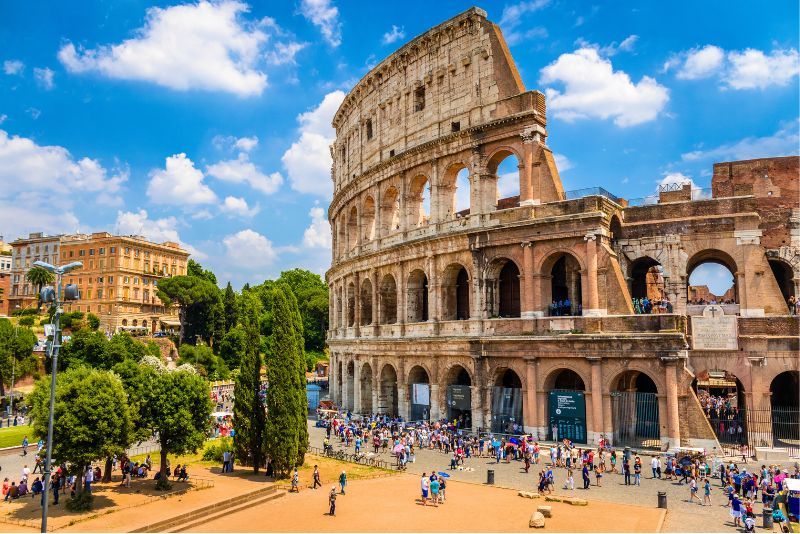
Yes. Booking your Colosseum tickets online in advance is the only way you can buy them nowadays. The Colosseum has no ticket booths at the entrance.
You can only book tickets online through the official website or a third-party ticket provider.
You could also book a guided tour with Colosseum tickets included in the total price. That’s the best way to have a stress-free day and fully make use of your time exploring the Colosseum.
Is access to the Colosseum Arena included in the Colosseum ticket?
Yes and no. It depends on which ticket you buy. The standard Colosseum ticket does not include access to the Colosseum Arena. However, the Full Experience Colosseum ticket does include access to the Colosseum Arena.
Can you visit the Roman Forum with your Colosseum ticket?
Yes, the Roman Forum is included in the Standard and Full Experience Colosseum tickets. The only difference is the amount of time you’ll have to visit.
Standard Colosseum tickets give you access for 24 hours from the ticket’s first use, whereas Full Experience Colosseum tickets give you access for two days to the Colosseum and the Roman Forum.
Is access to Palatine Hill included in the Colosseum ticket?
Yes, Palatine Hill is included in the Standard and Full Experience Colosseum tickets. The only difference is the amount of time you’ll have to visit.
Standard Colosseum tickets give you access for 24 hours from the ticket’s first use, whereas Full Experience Colosseum tickets give you access for two days to the Colosseum and Palatine Hill.
Are Colosseum tours worth it?
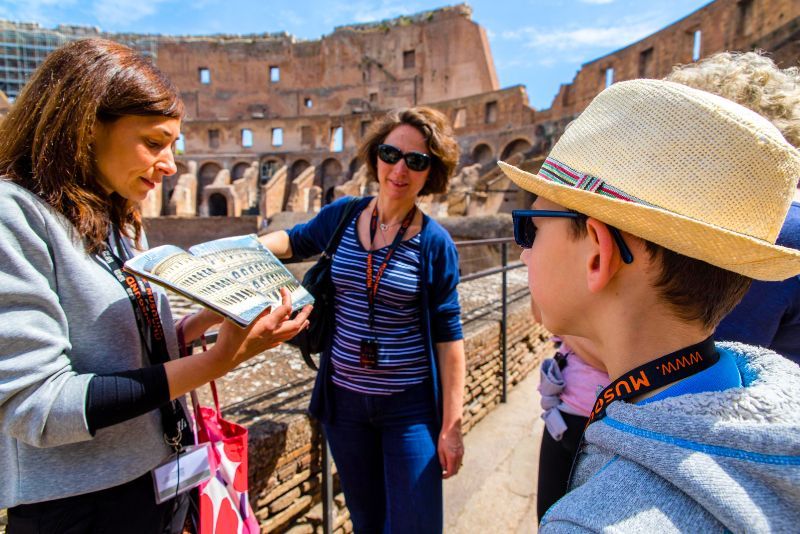
Yes! Guided tours of the Colosseum are certainly worth it. There’s so much to see at the Colosseum, so it’s easy to get lost and overwhelmed. A guided tour helps you make the best of your time at the Colosseum.
You skip the line - Your tour guide will be waiting for you at the entrance with your tickets in hand, so there’s no need to wait in line among the crowds of people. Guided tours will take you straight inside the Colosseum.
You will learn more - Your tour guide will be there to provide the historical context vital for fully appreciating the history and architecture of the Colosseum. Your guide will also ensure you don’t miss the most important sights and answer any questions you may have.
You can pick the best tour for you - From group or private tours to at-night tours and tours with special access to the arena, underground and upper levels of the Colosseum, there are so many options to choose from. TourScanner helps make it easier to find the tour that best fits your needs and budget.
What are the best Colosseum tours?
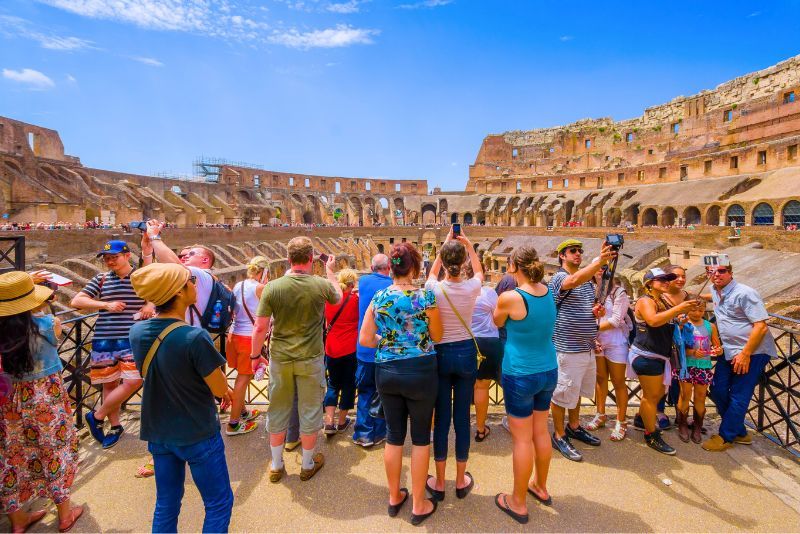
Colosseum group tours
On group tours of the Colosseum, you have a guide making sure you don’t miss the most impressive architectural details and that you fully appreciate the historical importance of each corner of the amphitheater.
Although there is certainly plenty to see at the Colosseum for an entire day or two, you can also book a half-day or full-day tour that includes other important sights in Rome, such as the Vatican Museums or the Catacombs of Rome.
Before booking a tour, consider how much time you have in Rome and where you would prefer to spend the most time. Then, choose a tour that best matches your interest.
If you have trouble finding a group tour that perfectly fits your needs, you should consider booking a private tour that will take you exactly where you want to go for exactly how long you want.
Private tours of the Colosseum
If you’re looking for a more personalized experience, then private tours of the Colosseum with your very own guide are just the thing. The tour can focus on what you’re most interested in, from specific works of architecture to the rich cultural and political history hidden around every corner.
You can choose from small group tours of up to 10 people, semi-private tours of up to 6 people or private tours exclusively for your own group. With a small group, you will have a more personal experience and be able to appreciate the Colosseum at your own pace.
You will have the guide’s full attention for any questions you might have, which helps to better understand the importance of the archeological site that you’ll be exploring.
Private tours can be combined with visits to other sites, such as the Vatican Museums and the Catacombs of Rome. You can also choose from tours lasting only a few hours or half-day and full-day tours with pickup directly from your hotel.
Colosseum at night tours
Your visit to the Colosseum doesn’t have to be one where you’re jostling with sweaty tourists under a sweltering sun. Colosseum at-night tours allow you to avoid the heat and the largest crowds.
Only available on Thursdays, Fridays and Saturdays, at-night tours are a good way to avoid the crowds that pack into the Colosseum during the day. This way, you can take your time admiring each section of the Colosseum without worrying about being in someone’s way, or vice versa!
These are generally private or small group tours, which are capped at 12 or 18 people. As these tours can only take place 3 days a week to a limited number of people, be sure to book your tour ahead of time as they tend to sell out weeks or months in advance.
Special access tours to the Colosseum
Not all areas of the Colosseum are open to the general public. There are more exclusive sections that require special tickets or tours to access, including the arena, underground and upper tiers of the Colosseum.
When you enter the arena, you’ll be setting foot on the same soil where gladiators once fought to the glee of over 50,000 spectators. Descending underground, you will see where exotic animals would be kept to suddenly spring out above ground into the arena.
Then, you will climb to the highest level of the Colosseum, known as the Belvedere. From here, you can enjoy the best views over the Colosseum and the city of Rome.
Book a special access tour to have a guide lead you through the Colosseum’s arena and underground areas.
Remember that only a guided tour can give you access to the views from the Belvedere top level of the Colosseum.
Are there any combined tickets or tours including the Colosseum and other attractions?
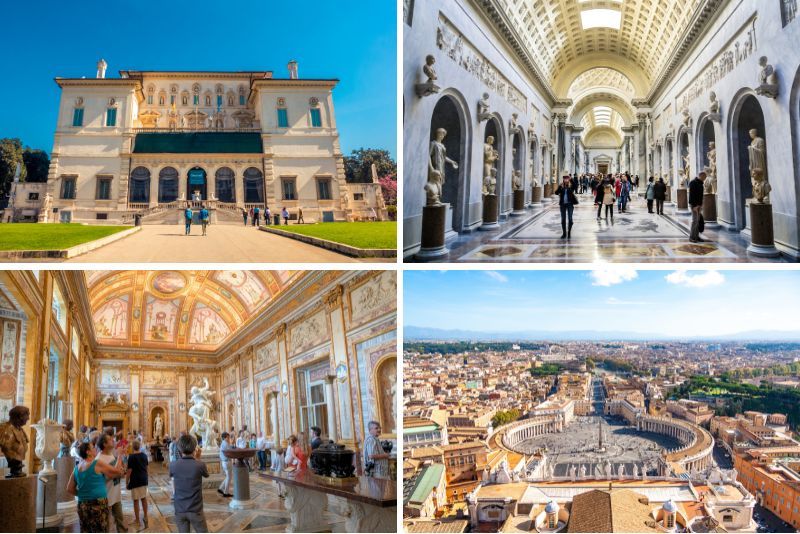
Yes! If you wish to visit several attractions in Rome during your holidays, combined guided tours are great for saving time and money.
You can include must-see experiences, such as browsing the thousands of paintings and sculptures in the Vatican Museums and admiring the frescoes in the Sistine Chapel.
- The Colosseum and the Vatican Museums: See the two most visited attractions in Rome, the Colosseum and the Vatican Museums.
- The Colosseum and the Sistine Chapel: After witnessing where gladiators once fought, you can appreciate the result of Michelangelo’s battles with paint on the ceiling of the Sistine Chapel.
- The Colosseum and a hop-on hop-off bus tour: Enjoy skip-the-line access to the Colosseum plus a hop-on hop-off sightseeing bus tour in Rome.
Are Colosseum tickets included in any sightseeing passes?
Yes, Colosseum tickets are included with the Omnia Card and the Rome Pass.
City attraction passes for Rome are great money-savers, as you can bundle tickets for attractions and public transport for day trips and multi-day trips around Rome.
What will you see at the Colosseum?
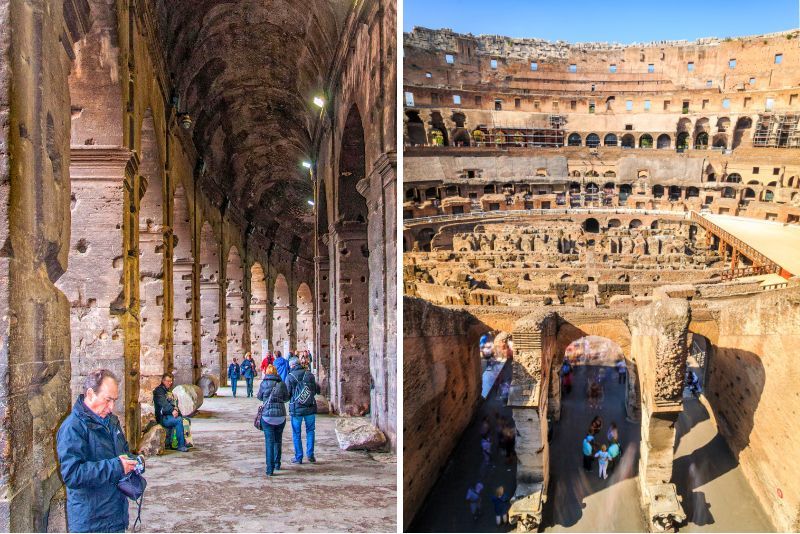
Made of volcanic tuff, brick-faced concrete and travertine, the Colosseum is the largest amphitheater and most popular tourist attraction in the world, clocking in over 7 million visitors a year.
Why do so many people come to see the Colosseum? Well, as the name suggests, it’s colossal, giant, humongous! In its heyday, the Colosseum would host up to 80,000 spectators for epic gladiator fights and even recreations of naval battles. Talk about making a splash!
To host these spectacles in front of such large crowds, the Romans constructed this big daddy of an amphitheater, which still dominates the city skyline to this day after nearly 2,000 years.
Inside the Colosseum
Once you set foot inside the Colosseum, you have several different sections to explore.
You can walk around the exterior and climb from the lower to higher seating areas. If you’ve booked tickets or a tour with more exclusive access, you can also descend to the center of the arena and further down into the underground hypogeum.
Similar to what you see today in modern stadiums, there are good and not-so-good seats in the Colosseum, which were divided into four tiers — the more prestigious you were, the closer you were to the action.
The first tier, closest to the arena, provided the best views and was reserved for the senators, the Emperor and his Vestal Virgins.
The second tier was where the non-senatorial noble class and the Roman knights would sit.
The third tier was for wealthy citizens and those with respected professions, such as heralds, soldiers, priests and scribes.
The fourth tier at the very top of the Colosseum is what people might refer to today as the nosebleed seats. This was where slaves, women and the lower classes would cheer from.
The Arena and the Hypogeum
The center stage of the Colosseum is nearly the size of a modern football field and was once covered in sand, or as it’s called in Latin — “arena”.
This sand would hide the wooden platform and trap doors underneath, so that bears, tigers and other exotic creatures would seemingly appear out of nowhere.
Under the arena, you can see what remains of the “hypogeum” — a system of underground tunnels for performers and animals to move around the Colosseum, unseen by the spectators.
Standard Colosseum tickets don’t include access to the arena or the hypogeum, so be sure to book Full Experience Colosseum tickets if you want to see these areas. Another option is to book a Colosseum tour, as all tours include access to the arena and the hypogeum.
Outside the Colosseum
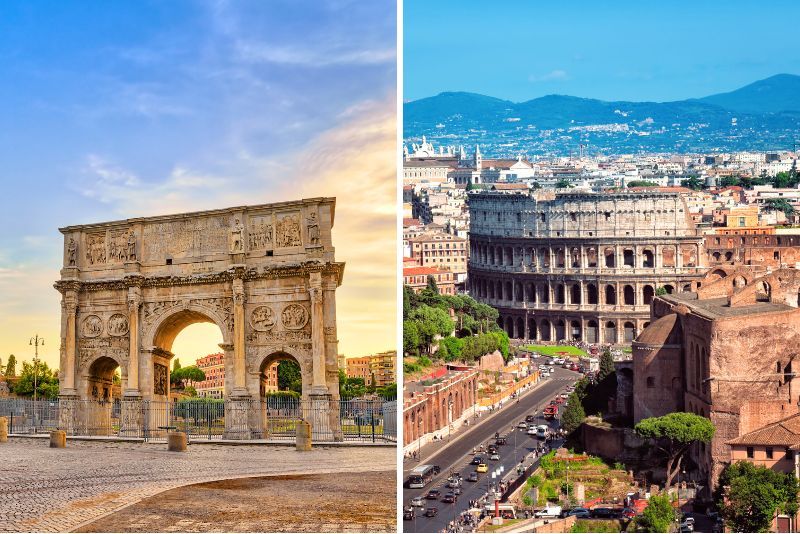
As you approach the Colosseum, you will first see the Arch of Constantine — the largest arch in all of Rome. However, next to the Colosseum, it could almost be called petite.
Looking up at the Colosseum, you can admire nearly 100 arches supported by massive columns and imagine how the throngs of spectators must’ve shuffled in and out for the day’s events.
The outer wall required over 100,000 cubic meters of travertine held together by 300 tons of iron clamps. Surprisingly, despite the massive scale, the Colosseum was constructed in less than a decade and hosted its first events in 80 AD.
As you can see, the Colosseum is no longer completely intact. A major earthquake in 1349 severely damaged the structure. Most of the tumbled stone was used to rebuild churches, palaces, hospitals and other buildings in the area affected by the earthquake.
After the fall of the Roman Empire, the arena was no longer used for entertainment and was repurposed as a fortress, quarry and even for housing at times.
Over the centuries, the Colosseum has been regularly restored and used for many different purposes, which is why it still stands today as an iconic symbol of the vast wealth and power once wielded by the Roman Empire.
Other buildings once stood around the Colosseum, including a gladiator school, storage rooms for armor and machines, an infirmary for injured gladiators and a “spoliarium,” where the dead bodies of gladiators were kept after their defeat in the arena.
The Roman Forum
The forum covers about two hectares, extending from the Colosseum to the Piazza Venezia. Within the Roman Forum, you will find aqueducts, churches, smaller forums and the tomb of the legendary founder of Rome — Romulus.
If you’re on a Colosseum tour or have booked Full Experience Colosseum tickets, you have exclusive access to certain sites, including Santa Maria Antiqua, the Oratory of the Forty Martyrs, the Temple of Romulus, the House of Augustus, the Rampa of Domitian and the Curia Iulia.
Palatine Hill
This is known as the most important of Rome’s seven hills, mainly because this is where the city was founded around the 9th century BC. You reach Palatine Hill by walking up from the Roman Forum towards the Circus Maximus.
You can enjoy the relatively new routes around the hill. Starting at the Severian Arcades, you will pass the Domus Augustana until reaching the Paedagogium. Continue to the Circus Maximus on the southwest slope of the hill to the exact spot where Romulus founded Rome.
How do you get to the Colosseum?
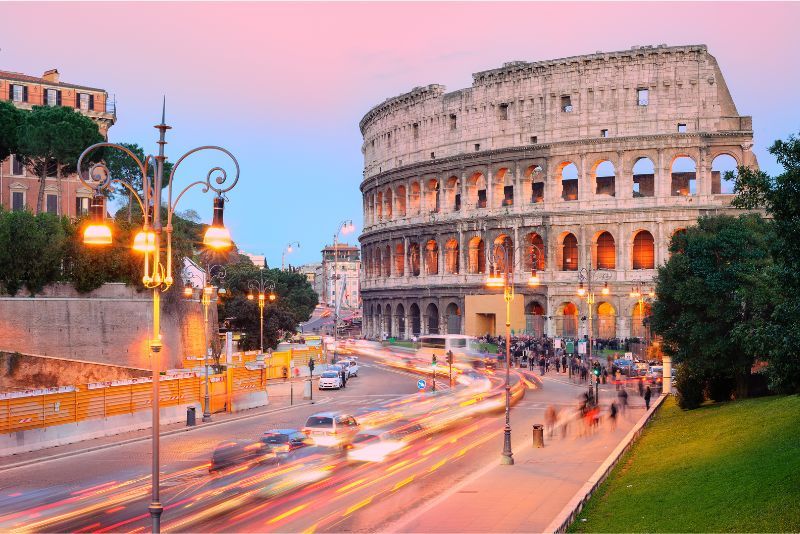
The Colosseum is located in Piazza del Colosseo, and you can easily get there by public transport.
By metro
Take Line B or B1 to the Colosseum's closest metro stop, Colosseo. The main entrance is a 5-minute walk from the station by Via Nicola Salvi.
By bus
Take Line 51, 75, 85, 87 or N2 to Colosseo station. Then, walk for about 5 minutes on Via Nicola Salvi until you reach the main entrance.
By tram
Lines 3 and 8 lead directly to the Piazza del Colosseo stop, which is a short walk away from the Colosseum.
By guided tour
This is certainly the most convenient way to get to the Colosseum. You can outsource all the stress and concerns about logistics to your tour guide, who will pick you up directly from your hotel.
Tickets for public transport
You have several ticket options in Rome that allow you to use all of the city’s public transport services. Remember, you can also buy an Omnia or Rome Pass to travel on public transport.
- A One-Way Ticket costs €1.50 and includes unlimited transfers for 100 minutes, except for the metro line (when it’s only valid for a single journey).
- A 1-Day Pass costs €7 and includes unlimited transfers for 24 hours.
- A 2-Day Pass costs €12.50 and includes unlimited transfers for two days.
- A 3-Day Pass costs €18 and includes unlimited transfers for three days.
- A Week Pass costs €24 and includes unlimited transfers for seven days.
When is the Colosseum open?
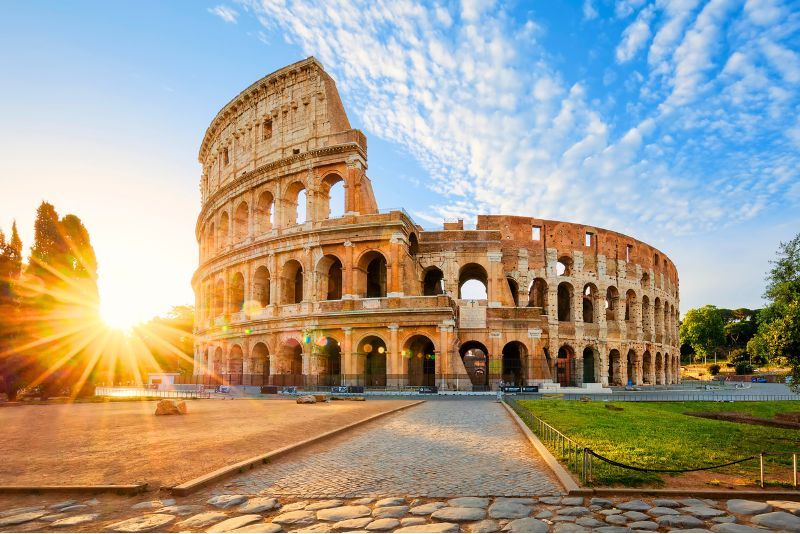
The Colosseum opens every day at 9 AM year-round. The closing time varies from 4:30 PM in the winter to 7:15 PM in the summer at the peak of the tourist season. The final entry is one hour before closing time.
- From March 26 to August 31, the Colosseum closes at 7:15 PM.
- From September 1 to 31, the Colosseum closes at 7 PM.
- From October 1 to 28, the Colosseum closes at 6:30 PM.
- From October 29 to February 28, the Colosseum closes at 4:30 PM.
- From March 1 to 25, the Colosseum closes at 5:30 PM.
What is the best time to visit the Colosseum?
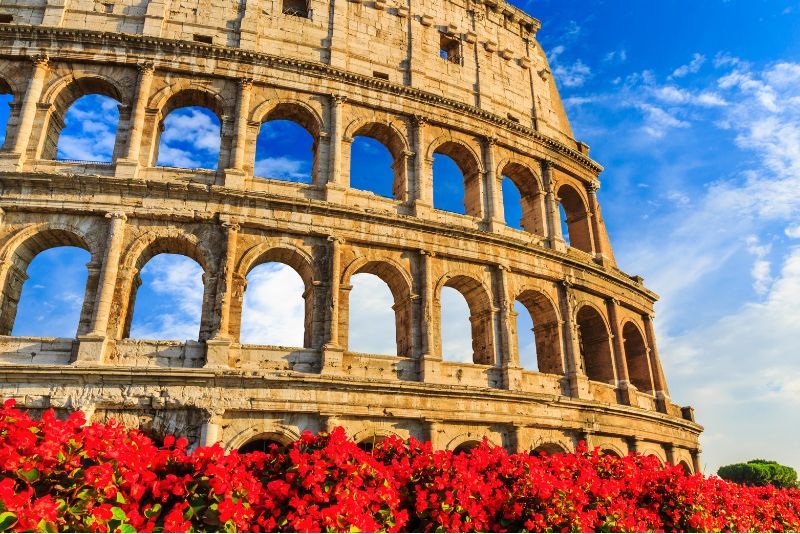
The densest crowds at the Colosseum are in the summer, from March to October. Also, winter break, around Christmas and the New Year, is another busy time of the year.
During these periods, you should plan to visit the Colosseum early and on weekdays to avoid the peak of the crowd.
Otherwise, the best time of the year to visit is in the winter, from November to February. Remember that it can get chilly, and the Colosseum will close a few hours earlier.
Which other attractions can you visit in Rome?
Travel tips
- Head straight to the top! People tend to gather around the entrance and lower levels of the Colosseum, so if you go higher, you can have better views and more breathing room.
- Pack lightly! Large bags and backpacks, glass bottles and sharp objects aren’t allowed in the Colosseum. Also, there’s no cloakroom, so whatever you bring, you’ll need to carry with you all day.
- Wear your walking shoes! Don’t forget that everything about the Colosseum is ancient, including its walkways, which are often bumpy and uneven.
- Watch out for scams! Don’t purchase tickets from random ticket sellers near the Colosseum. Instead, compare deals from trustworthy online ticket providers.
